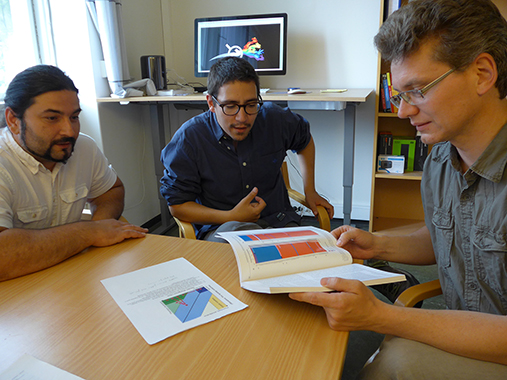On the 13th of June, the question was illuminated and debated by some of the world’s leading experts at the Natural History Museum (NHM) of the University of Oslo, hosting an international symposium on the topic of cryptic species.
“In theory, the capacity to reproduce is the hallmark to define species. However, the established practice is to define a species based on morphology. Individuals belong to the same species if they have very similar appearance,” explains Professor Torsten Struck at NHM.
Recently, due to the increased usage of DNA-based methods, biologists were able to identify a number of species within traditionally established species. In some of these cases, difference in appearance could be detected. In other cases, several new species did not carry any visible differences in their characteristics. Indeed, they look very similar or even identical to the human eye, even to the eyes of a trained expert. Such complexes of species are known as cryptic species.
The topic of cryptic species challenges much of the conventional wisdom forming the basis of established taxonomies and the traditional practices of biological classification.

Why are cryptic species important?
Cryptic species harbour an unexpected high genetic diversity. The lack of morphological change is traditionally regarded as morphological stasis. Since there has been no detectable change in appearance, it has been argued that the individuals of these different species could interbreed with each other and therefore very limited genetic diversity was expected.
Although cryptic species are detected at an increasing pace, several questions still need to be addressed. Why do cryptic species occur at this high degree? Is this phenomenon common throughout the tree of life; in plants, fungi, worms, insects, birds, mammals? Does it occur more often in certain environments, such as the sea? Is there a common process explaining the phenomenon?
Recent research points out that, despite strong morphological similarities among closely related cryptic species, there might be differences in habitat preferences, chemical communications or feeding specializations that set them apart.
Malaria mosquitoes that cannot transmit malaria
Recognizing distinct species is important for many applied fields of science, such as conservation biology and epidemiology. For example, the insect species Anopheles gambiae is responsible for the transmission of malaria to humans. Recently, this species was recognised as a cryptic species complex. Interestingly, not all species belonging to this complex are able to transmit malaria. After the cryptic species were recognized, it was shown that they exhibit differences in habitat preferences – different species prefer different types of water ponds. In this case, correct identification is vital for defining measures and common practices to avoid malaria transmission by mosquitoes.
What are the future implications?
The purpose of the conference at the Natural History Museum in Oslo was to discuss the processes and implications around the research associated with cryptic species. Approximately 50 researchers gathered at Tøyen Hovedgård manor house in the Botanical garden.
After an introductory talk by Professor Torsten Struck of the Natural History Museum of the University of Oslo, three keynote speakers gave their contributions:
- Professor Jeffrey Feder, University of Notre Dame, USA
- Professor Gene Hunt, National Museum of Natural History, Smithsonian Institution, USA
- Professor Sarah Samadi, Muséum National D’Histoire Naturelle, Paris, France
Discussions showed that a cryptic species complex will cause the evolution of cryptic species in their parasites. Another find is that the detection of cryptic species is related to the established taxonomic practices of a researcher. The less inclined a researcher is to describe a new species on minute differences, the higher is the degree of cryptic species. Hence, the degree of detecting cryptic species also depends on the human observer bias.
These public lectures were followed by further discussions about concepts and consequences related to cryptic species and the associated research. Following this symposium, the scientists from the Natural History Museum will write a scientific paper that will discuss the issues of cryptic species and pave the road for future works on this topic.
